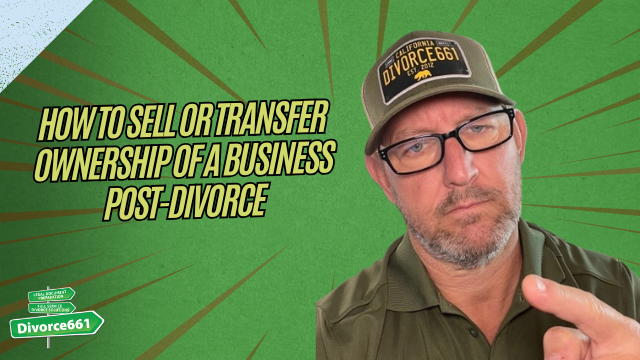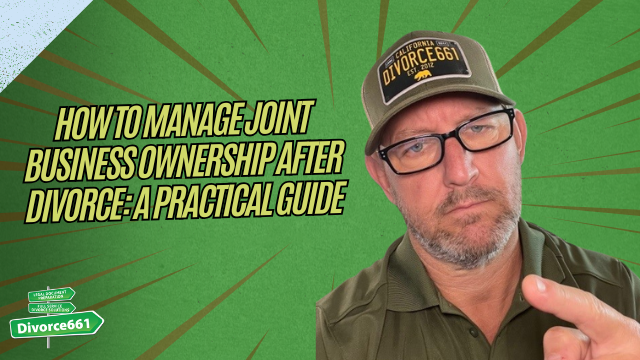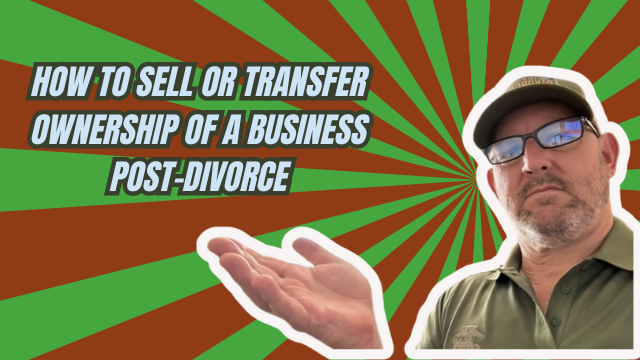What Happens If You and Your Ex Still Own Property Together?
Co-owning property with your ex-spouse after a divorce might seem straightforward at first. After all, you share ownership, so managing it together should be manageable, right? Unfortunately, without clear agreements, this situation can quickly spiral into a financial and legal headache. Drawing from expert advice by Tim Blankenship of Divorce661, this article explores the potential risks of co-owning property post-divorce and offers practical steps to protect your investment, your credit, and your peace of mind.
Why Co-Owning Property After Divorce Is Riskier Than You Think
When a property remains jointly owned after divorce, the absence of a detailed co-ownership agreement often leads to confusion and conflict. Critical questions arise: Who is responsible for paying the mortgage? Who handles repairs and maintenance? Without clear answers, these issues can cause serious disputes that affect both parties financially and emotionally.
For example, disagreements over mortgage payments can damage credit scores if one party fails to pay on time. Similarly, neglecting repairs or maintenance can lower the property’s value and create tension between co-owners. These challenges highlight why informal or verbal agreements are inadequate when it comes to managing shared property post-divorce.
The Importance of a Well-Crafted Co-Ownership Agreement
To avoid these pitfalls, a detailed co-ownership agreement is essential. This document serves as a roadmap for managing the property and outlines each party’s responsibilities clearly. Key elements to include are:
- Mortgage Payments: Specify who pays the mortgage and how payments are divided.
- Repairs and Maintenance: Define who is responsible for repairs, routine upkeep, and how costs are shared.
- Property Management: Establish how decisions about the property will be made, including rental agreements if applicable.
- Dispute Resolution: Outline steps to resolve disagreements to prevent conflicts from escalating.
Including these terms either in your divorce judgment or as a separate post-judgment agreement is critical. This legal clarity safeguards your financial interests and fosters a more harmonious co-ownership experience.
A Real Client Story: When a Broken Furnace Became a Major Conflict
Consider the case of a couple who retained ownership of a rental property after their divorce but failed to create a written agreement. When the furnace broke down, neither wanted to cover the repair costs. This disagreement quickly escalated into a costly conflict, highlighting the dangers of vague arrangements.
This situation could have been avoided with a clear agreement specifying who handles repairs and how expenses are shared. It’s a cautionary tale that underscores the need for proactive legal planning when co-owning property with an ex.
How Divorce661 Can Help You Secure a Conflict-Free Co-Ownership
At Divorce661, we specialize in crafting enforceable co-ownership agreements that clearly outline financial and legal responsibilities. Our flat-fee divorce services cover every angle, ensuring you have a comprehensive plan that protects your investment and prevents future disputes.
We offer 100% remote services throughout California, making it easy and convenient to get the legal support you need. Whether you’re managing mortgage payments, repairs, or other property-related responsibilities, we help you establish a clear, enforceable plan.
Take the First Step Toward Protecting Your Financial Future
If you’re still co-owning property with your ex, don’t wait for a conflict to arise. Visit Divorce661.com for a free consultation. Let us help you put a plan in place that works now and long term, securing your financial future and peace of mind.
Final Thoughts
Co-owning property with your ex after a divorce doesn’t have to be a source of stress and conflict. With a well-drafted co-ownership agreement, you can clearly define responsibilities and avoid costly disputes. Protect your credit, your investment, and your sanity by planning ahead.
Have you navigated co-ownership with an ex? Share your story and insights to help others facing similar challenges.










